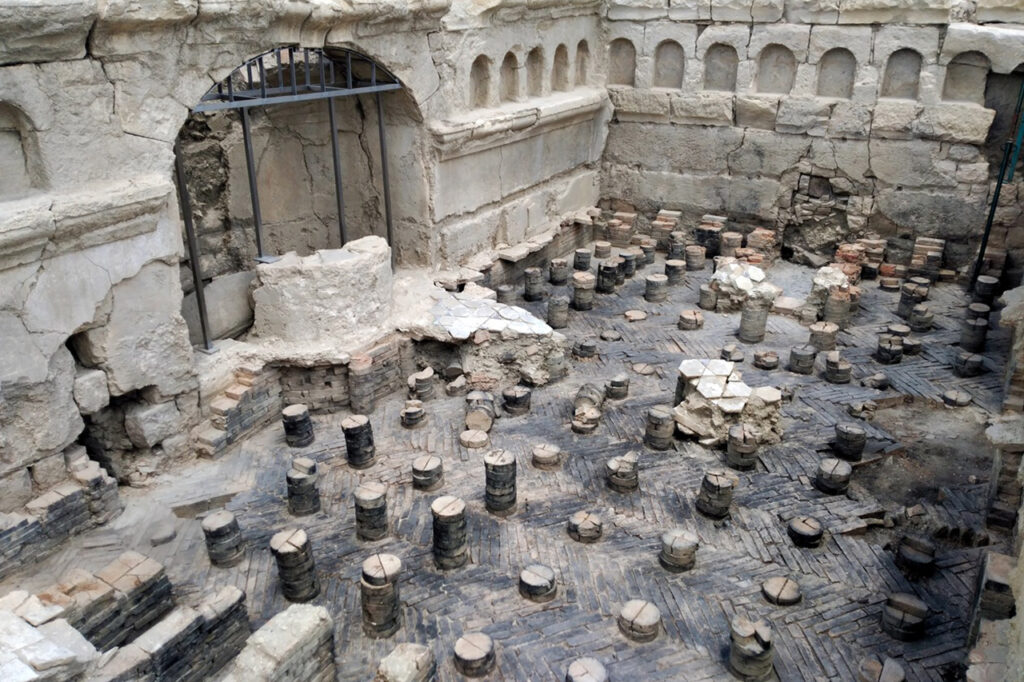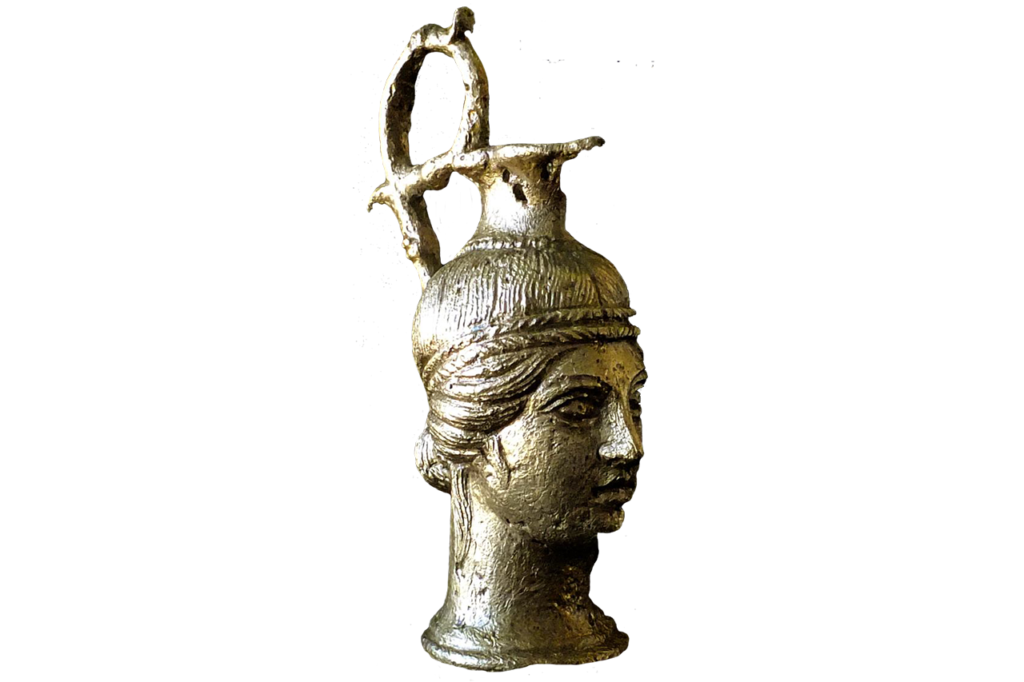
Oriental hot springs
The Roman thermal baths of Health, also known as oriental thermal baths, are the third documented in the city along with those existing next to the Forum and the balneum located in the hermitage of the Virgins that was sponsored by the citizen Marco Calpurnio, according to what appears from an inscription preserved in the Baenense Historical Museum that attests to this.
Built in the first half of the 1st century, they were later renovated during the Flavian era and remained active until their final abandonment in the 2nd century AD.
With an area of 220 square meters, they consist of a cold roomfrigidariumwarm room( tepidarium )and hot roomcaldarium, which also served as a changing roomapodyteriuma large room where the original walls have been preserved. more than three meters high and the gaps in the lockers where users deposited their clothing.
Noteworthy are the altar dedicated to the goddess of Health, the hot water pool ( alveus ) and a cold water fountain to withstand high temperatures ( labrum ). Likewise, the hypocaust has been preserved with part of the original pavement of geometric motifs in marble of various colors.
The water was supplied from a very deep well located in one of the corners of the building from whose interior a delicate bronze jug in the shape of a female head was extracted that must have had a cultic purpose.
The cold room has a floor of opus tessellatum , with large white tesserae, and its very well preserved pool, plastered with opus signinum .
The room has several doors to the north, one that communicated with the service area and another that opens to a small space that must be the vestibule, with another door facing the street and whose façade was enhanced with several limestone pilasters.
In addition, another door that preserves its lintel in situ gave access to the tepidarium from the service area. Towards the south there would be the latrines but they were less well preserved. And we continue with the well discovered in the area where the altar dedicated to the goddess Health appeared.

Lockers and hypocaustum system of the thermal baths.

Ritual jar found in the eastern hot springs.
The Roman baths
The thermal baths were public baths in the ancient Roman civilization. The design of these spaces was argued by Vitruvius in his work De architectura . They were distributed in several rooms with different temperatures ranging from pools with cold water (frigidarium), passing through other temperate rooms (tepydarium) and completing with hot ones (caldarium). The building would also have a service area where the ovens would be located and, generally, other spaces such as the arena, which could be outdoors and served for large-scale performances, since when they were smaller they were called balneae .
Most of the cities of Ancient Rome housed one or several public baths, whose use was not only for hygiene, but were also considered meeting places and for gymnastic and recreational activities. The water was supplied from a nearby river or stream and with aqueducts in the large cities, it was later heated in a bonfire and transferred to the caldarium , where the water temperature was high.
The Roman public baths served a social and political function. They were ideal places for relaxed conversation, recreation and social interaction, with all that that meant. The environment was cared for with a delicate decoration where no means were spared, filling the rooms with wonderful frescoes, mosaics and statues.
Recreation of the eastern hot springs
The monumentality and importance of the oriental thermal baths, also known as the Health Baths, due to the dedication of the altar discovered inside, is evident both in the remains of the building itself and in the virtual recreation that allows us to get to know it in its age of majority. splendor.